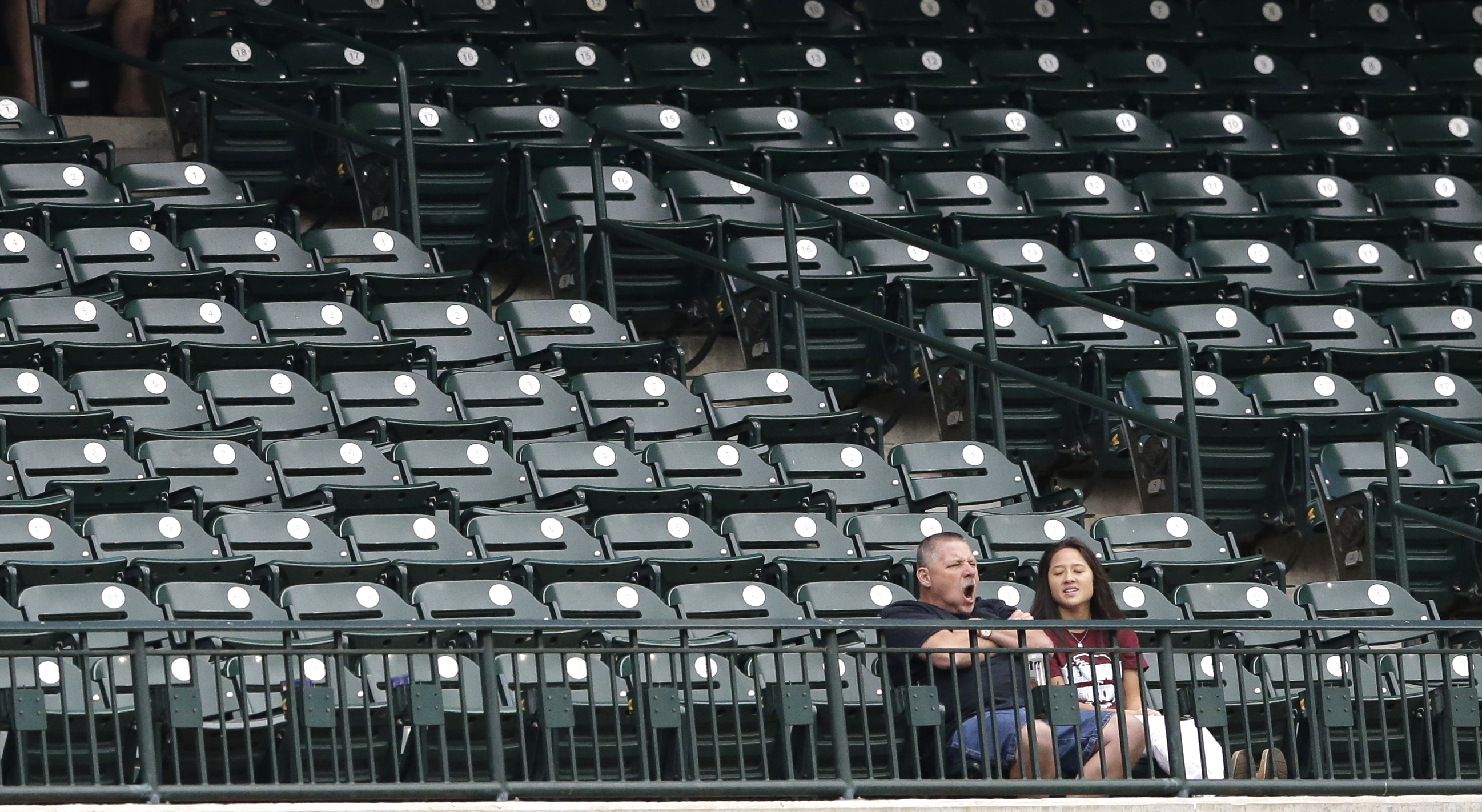
Baseball doesn’t quite understand — or isn’t willing to understand — why many people have given up on it.
It revealed a series of game changes on Thursday that it thinks will make fans fall in love with the game again. These are the changes that the players’ union was willing to endorse.
The league is continuing to try to shorten games, so the most interesting of the adjustments is shortening the time between half innings during local broadcasts — by five seconds.
That’ll shave about a minute and a half off games, which last season averaged an even three hours.
For national broadcasts — this applies, basically, only to the Yankees and Red Sox — the time will be reduced by 25 seconds.
Once again, Major League Baseball is merely trimming around the edges and trying to serve hamburger as filet mignon.
For example, two years go it unveiled the first efforts to speed up the game. It didn’t work.
The average time for a game in 2016 was exactly the same as it was last season. Average game attendance, meanwhile has dropped from 30,001 to 28,659, the lowest it’s been since 2003. That’s baseball fans telling the league something.
Thursday’s announcement was baseball not listening.
The league also announced that it will reduce the number of catcher visits to the mound each team will be allowed per game from six to five. That also will make no difference.
What will make a difference is what the union will never go along with: fewer jobs for players. Last season, an average team used 4.6 pitchers per game, indicative of the increasing role of relief pitchers and the tactical advantages of changing pitchers so often during a game, each stopping the game like a St. Paul pothole.
When the Twins won their first championship of the modern era in 1987, it was 2.89.
Baseball knows what the problem is. It’s just found so many ways to squeeze money out of what happens during the game that it can’t get itself clean from its addiction.
The league has given some indication that it might try, however. It says it is considering limiting the number of pitchers a team can carry on its roster. But the size of the rosters will be increased starting next season, although the traditional September call-ups of minor leaguers will be eliminated.
Baseball is, basically, for old people. Therein lies the problem, which affects almost every American institution that is spurned by a younger crowd. It can’t fix what imperils its future without alienating the only people still embracing the status quo (see also: newspapers, radio, voting, and climate change).
Last fall, a group of professors at New York University offered a magic pill: “the catch-up rule,” which allows a team in front during a game fewer outs per inning. That, of course, will never fly and not because it wouldn’t work.
Dying institutions have a difficult time understanding that doing nothing is doing something.
(h/t: Paul Tosto)
